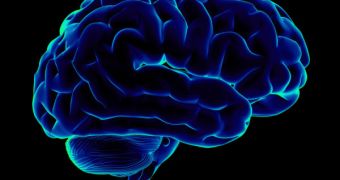Scientists at the Washington University School of Medicine (WUSM) have recently been able to determine that the “white noise” our brains make changes considerably once we start learning new things, hinting at the fact that it helps reshape the neural connections that allow us to memorize new information. Details of the investigation appear in the current issue of the respected journal Proceedings of the National Academy of Sciences (PNAS), e! Science News reports.
“Recent studies have shown that in the absence of any overt behavior, and even during sleep or anesthesia, the brain's spontaneous activity is not random, but organized in patterns of correlated activity that occur in anatomically and functionally connected regions. The reasons behind the spontaneous activity patterns remain mysterious, but we have now shown that learning causes small changes in those patterns, and that these changes are behaviorally important,” the WUSM Norman J. Stupp Professor of Neurology, Maurizio Corbetta, MD, explains. He is also the senior study author.
The investigators used functional connectivity Magnetic Resonance Imaging (fcMRI) on the brains of 14 test participants, who were resting quietly at the time. The team also included graduate students Chris Lewis and Antonello Baldassarre, all at the WUSM. The results showed that correlations formed between two areas of the brain during the analysis – a part of the visual cortex and areas in the dorsal part of the brain. “It's as though these two brain systems are learning to get out of each other's way. After learning, the brain can identify the targets at a glance in a way that requires less direct attention and thus less interaction between the regions involved in the task,” Corbetta says.
The new study “suggests that disruption of spontaneous correlated activity may be a common mechanism through which brain function abnormalities manifest in a number of neurological, psychiatric or developmental conditions,” the expert adds. He argues that the changes exhibited in the white-noise patterns may be a sort of “memory trace,” which allows for previous experiences to be remembered until the brain becomes capable of learning and/or memorizing it.

 14 DAY TRIAL //
14 DAY TRIAL //